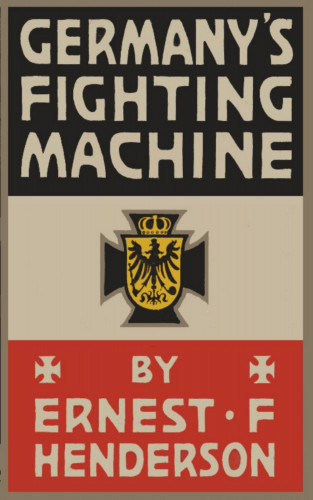Ernest Flagg Henderson: Germany's Fighting Machine: Army, Navy, Airships

| Produkttyp: | eBook-Download |
|---|---|
| Verlag: | anboco |
| Erschienen: | |
| Sprache: | Englisch |
| Seiten: | 500 (Druckfassung) |
| Format: | EPUB
Info▼
|
| Download: | 5,5 MB |
GERMANY'S FIGHTING MACHINE (First War), her Army, her Navy, her Air-ships, and
why she arrayed them against the
Allied Powers of Europe
But a few weeks ago the author of this little book was in Germany studying the land and its institutions and full of admiration for its achievements in every field. Two days after he had taken ship for America Germany was practically at war with France and Russia. England soon joined in the conflict, and the splendid Hamburg liner on which the author was a passenger was a hunted thing on the ocean, owing her safety at last to a friendly fog. The great shipping company, with its nearly two hundred vessels, was out of the running as a commercial enterprise, a symbol of the paralyzed industries of the whole country.
To the ordinary observer the conflict came like a bolt from the blue, but to the historian and to the man who reads the foreign newspapers it was not unexpected. The historians recognized that it was the appointed time for a war between the great nations. The Franco-Prussian War took place forty-three years ago. When, since the days of the grandsons of Charlemagne, have the chief powers kept out of war for so long a time? In the ninth and tenth centuries the question of Lorraine was as troublesome as it has been in the nineteenth and twentieth; in the eleventh and twelfth an expedition against Italy was in the day's work of almost every German emperor; and England and Sicily were conquered by the Normans; in 1215 took place the first general international battle; in 1250 the final expeditions against the Emperor Frederick II; in 1272 the Sicilian wars of the house of Anjou. The Guelphs and Ghibellines carry us on to the Hundred Years' War; the Hapsburg struggles against Italy and the Turks bring us down to the invasion of Italy by Charles VIII of France, to the campaigns of Maximilian, to the Field of the Cloth of Gold, to the religious wars of Charles V. Close on the heels of the latter struggles came not only the French religious wars but the invasion of England by Philip II's great armada. The Thirty Years' War, Louis XIV's war of conquest, the Spanish Succession, the Silesian and the Seven Years' Wars fill the seventeenth and eighteenth centuries; the Napoleonic, Crimean and Franco-Prussian Wars the nineteenth. Yes, it was time for a new struggle.
When a great and extraordinary event takes place it is easy, somewhere in the world, to point to omens and prophecies that have heralded it. But in the case of the present war we can see in the German newspapers how, from month to month of the present year, the struggle was felt to be more and more imminent and how Russia, the power that eventually precipitated the catastrophe, was felt to be the center of real danger.
